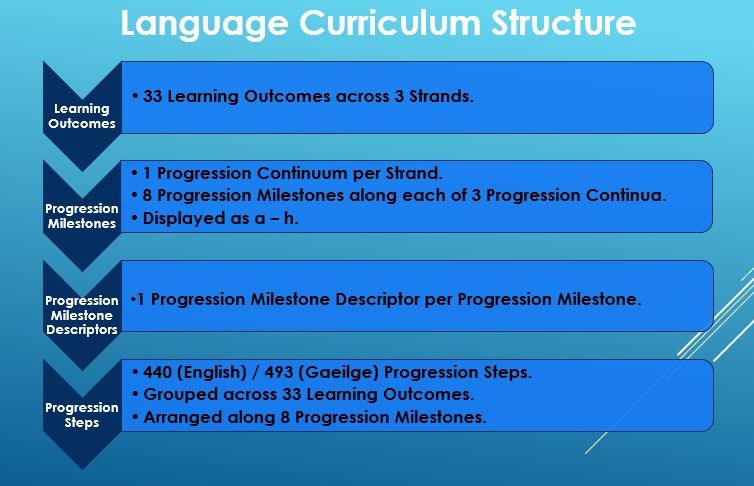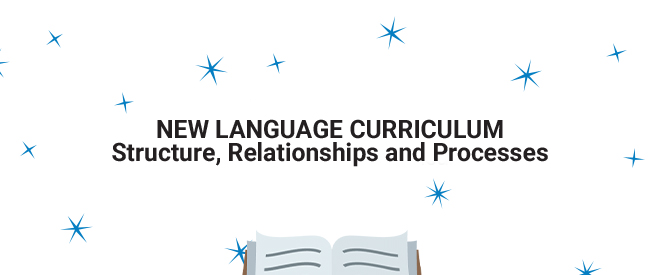With the new Primary Language Curriculum in the implementation stage, we decided to take a look at the overall structure of the new language curriculum and try to clarify how the various elements are presented and how you should interact with them.
Structure, Relationships and Processes
As you know the new curriculum is being implemented on a phased basis with stages 1 and 2 covering Junior Infants to Second class with Stages 3 and 4 due for publication early in the 2018-19 school year.
The curriculum, when complete, will be presented in four stages, with each stage corresponding to two class levels. The curriculum for English and Gaeilge is similar in structure and content, with some variation to take account of the differences between schools where Gaeilge is the first language of the pupils (T1) and schools where Gaeilge is the second language (T2).
The basic structure of each subject in the language curriculum is:
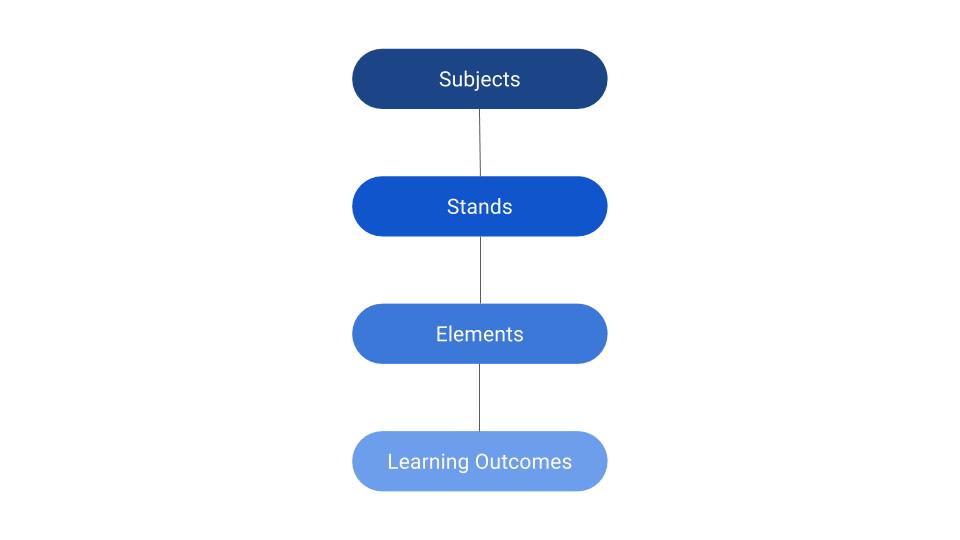
There are three strands in each subject and three elements in each strand.
The strands are:

Each strand has the same three elements:

For stages 1 and 2 there are 33 learning outcomes for each subject, divided across the strands and elements as follows:

Progression Milestones
For each strand—oral language, reading and writing— the curriculum includes a progression continuum of significant Progression Milestones and detailed Progression Steps involved in children’s language learning and development. In curriculum stages one and two there are eight Progression Milestones (A – H).
Children at Curriculum Stage 1 (Junior & Senior Infants) will generally be in the range Milestone A – E while children at Curriculum Stage 2 will generally be in the range Milestone D – H. However, these ranges are indicative only and teachers are best placed to make a judgement on where their class or groups of children in their class are at, in terms of progression levels or pace.
The progression milestones describe, in broad terms, children’s language learning and development. Most, though not all, children will have reached Milestone A before beginning Junior Infants and, at the other end of the progression continuum, Milestone H is intended to support high-achieving children in Second Class.
Each progression milestone, across the three strands, has a progression milestone descriptor. This is an overview of the children’s progress for each progression milestone across all the learning outcomes in that strand. It is envisaged that these descriptors would become a reference for teachers and that teachers would become familiar with them over time.
Children’s progress under each of the learning outcomes can be planned for, or tracked, through the eight progression milestones (A – H) along the relevant progression continuum. Learning outcomes describe children’s expected language learning and development and the progression continua describe, in broad terms, milestones and steps along their journey towards achieving the learning outcomes.
Each learning outcome has a number of progression steps along the continuum – between one and six per progression milestone. In English, at Stages 1 and 2, there are 440 progression steps in total. The total for Gaeilge is 493 (including some additional progression steps).
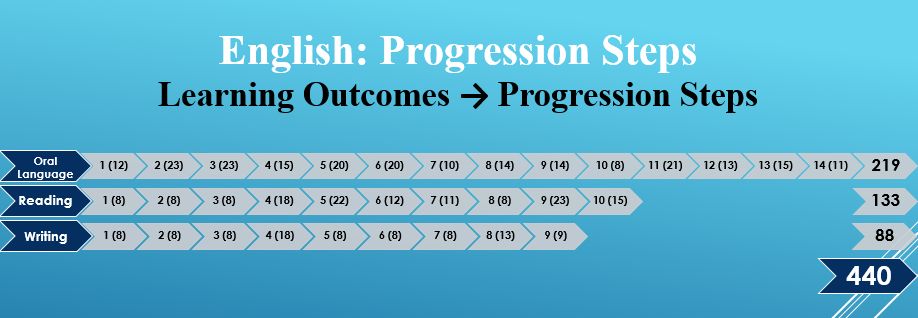
These steps describe how children’s development can be observed as they progress along the continuum for each learning outcome. The progression milestones and steps can be used to identify where children are at; to provide detailed information to assist in planning for teaching and learning and to support pupils who are at a different level or are progressing at a different rate to their peers.
Here is an example of the various curriculum components for one English learning outcome in the Oral Language strand:
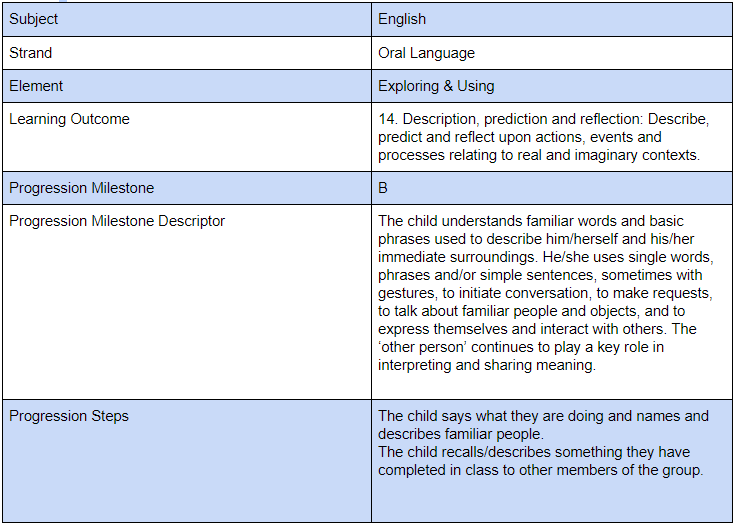
It is envisaged that teachers who are currently implementing the new Language Curriculum will be engaging with it down to learning outcome level and we at the Primary Planning Tool have included the new curriculum to this level. Any additional information or links required can be added to the learning outcomes using the annotation feature. We are now working on planning for the inclusion of the progression continua and progression steps. Our aim is to provide ease of access to these components and to allow teachers to use them effectively and efficiently in their planning.
